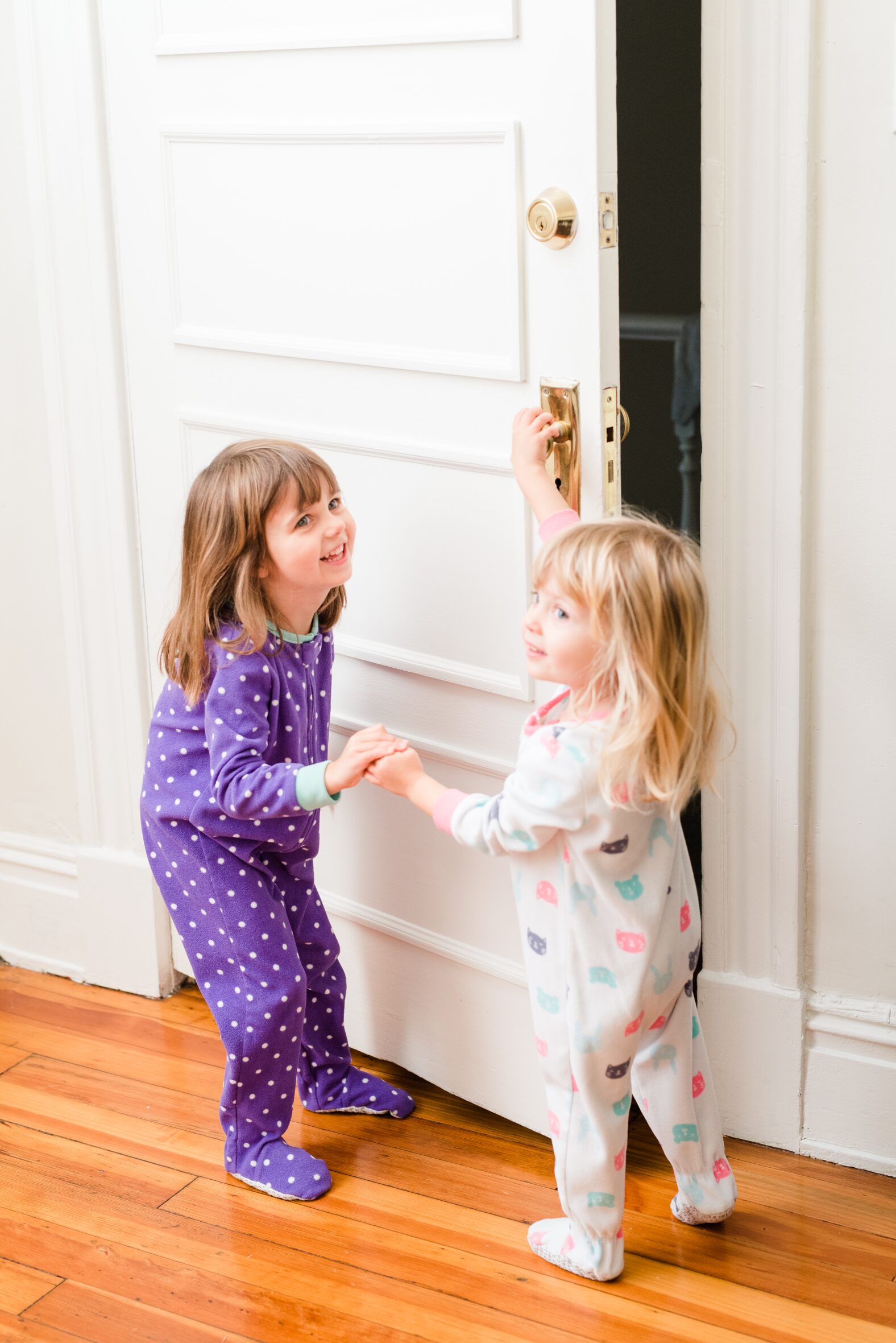Having children share a bedroom has its pros and cons. Some families don’t have a choice, but others do. Ideally children would be close in age if they are going to share a room. I always recommend that both children are sleeping through the night consistently before moving them in together.
Three Potential Problems with Sharing a Bedroom
1. Different bedtimes
You may need to put your children down at different times if they are different ages. Don’t assume that your older child will be the one to go down later. Sometimes a child who still naps may need a later bedtime than a child who does not nap anymore.
2. More trouble falling asleep
Some children can be stimulated by the presence of others in the room when they are trying to fall asleep. They may try to interact with each other instead of going to sleep. Children sometimes prefer different sleeping environments. Does one need a night light but the other needs to sleep in pitch black? This can often be more of a problem if they aren’t close in age.
3. Waking each other in the middle of the night or too early in the morning
If one of your children is prone to waking up her sibling during the night, keep a monitor in the room and go in as soon as you hear her so she doesn’t have the chance to wake the other child. That being said, many kids sleep through the noise of their siblings, especially in the first half of the night (when they are in a deeper sleep). In the morning, older children may read quietly in bed, but younger children probably won’t. Encourage your child to wake you up instead of waking up her sibling.
Tips for sharing a room
For any age:
- White noise is great for winding kids down and blocking out distracting sounds. I like to put it between their beds.
- Separate for naps if naps are difficult. Leave one child to sleep in their room and take the other to another room to sleep. They will usually fall asleep quicker and take longer naps.
- Do bedtime routines together if your kids are close in age and have similar sleep needs.
For older kids:
- Visual barriers can be helpful. A bed tent or canopy or a large bookcase in the middle of the room might help divide the space between the beds. Bunk beds can also be a good option because they not only save space but also visually separate kids for sleep, so they’re less likely to bother each other. The American Academy of Pediatrics (AAP) recommends that all bunk beds be placed in a corner and against a wall for extra security, that guardrails be used on the top bunk, and that a light be placed near the ladder so kids can go up and down safely in the dark. Only children over the age of six should sleep on the top bunk, and jumping and roughhousing should be discouraged.
- Talk Time is a short amount of time you can let your kids chat once they’re in bed. Set a timer in their room for 5 or 10 minutes and when the timer goes off go in to tell them their talk time is over and it is time to be quiet.
If you need to sleep train one child, consider moving the better sleeper out temporarily. It’s important that you sleep train the child struggling with sleep in the children’s bedroom, so you don’t create more disruption transitioning her back to her room. (If you need help with sleeping training a consultation would be beneficial for you!

